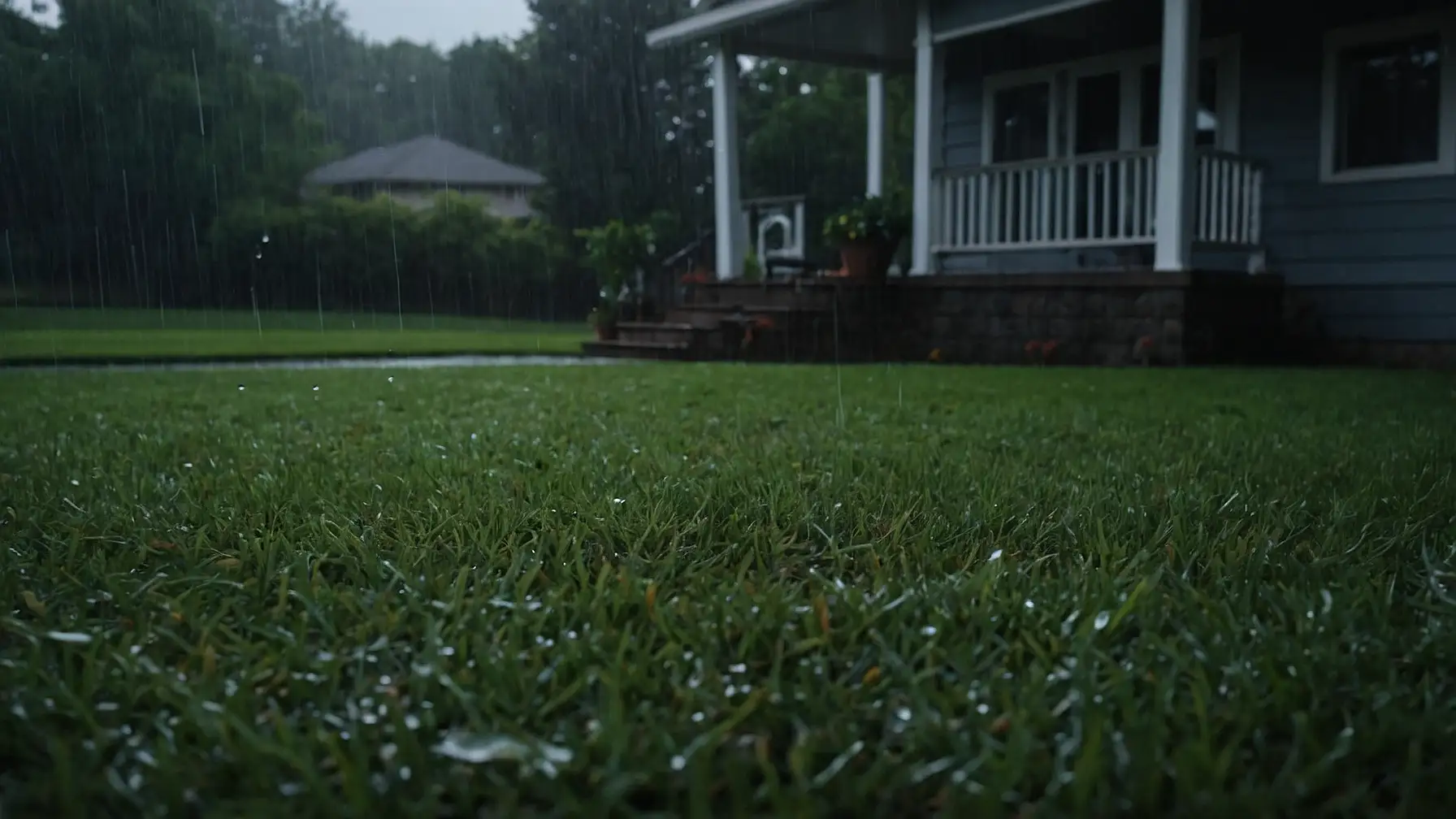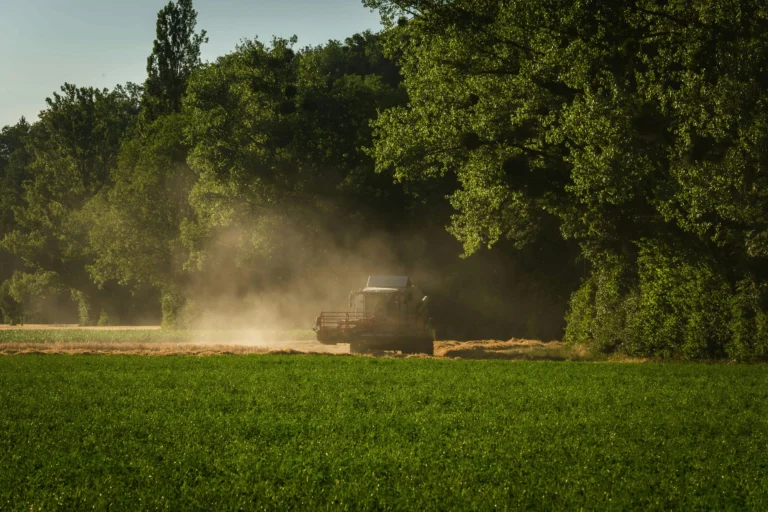How to Protect Your Lawn from Heavy Summer Rain: Essential Tips for Preventing Flood Damage
You can protect your lawn from heavy summer rain by improving drainage, preparing the soil, and quickly addressing waterlogged areas.
Too much rain causes bald spots, yellow grass, and pooling water. Taking a few simple steps now keeps your lawn looking healthy all season.
Understanding the Impact of Heavy Summer Rain
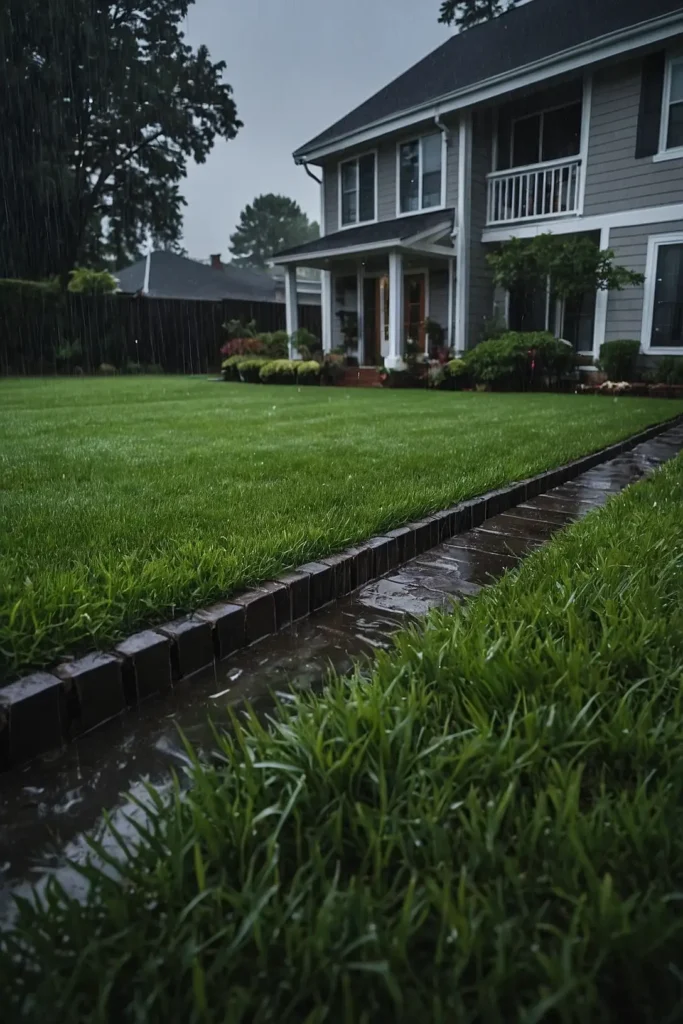
Too much rain in summer can damage your lawn in ways you might not expect.
If the soil stays wet for days, you could see unhealthy grass, fungus, and other yard headaches.
Common Lawn Problems Caused by Excess Rainfall
Heavy rain drowns your lawn by filling up the spaces in soil where oxygen should be. Grass roots need water and air, but soggy soil basically suffocates them.
Water often pools on the lawn after a storm. Standing water leads to grass diseases like root rot and fungus. Old leaves or grass clippings left lying around trap moisture, making things worse.
Here are some issues you might see:
| Problem | Description |
|---|---|
| Waterlogged soil | Roots can’t get enough air, which stunts growth. |
| Fungus growth | Wet grass creates a perfect environment for fungus. |
| Erosion | Heavy rain can wash away soil and grass seeds. |
| Thin or patchy grass | Damaged roots cause bare spots to develop. |
Excess moisture attracts pests like worms and insects.
Signs Your Lawn Is at Risk
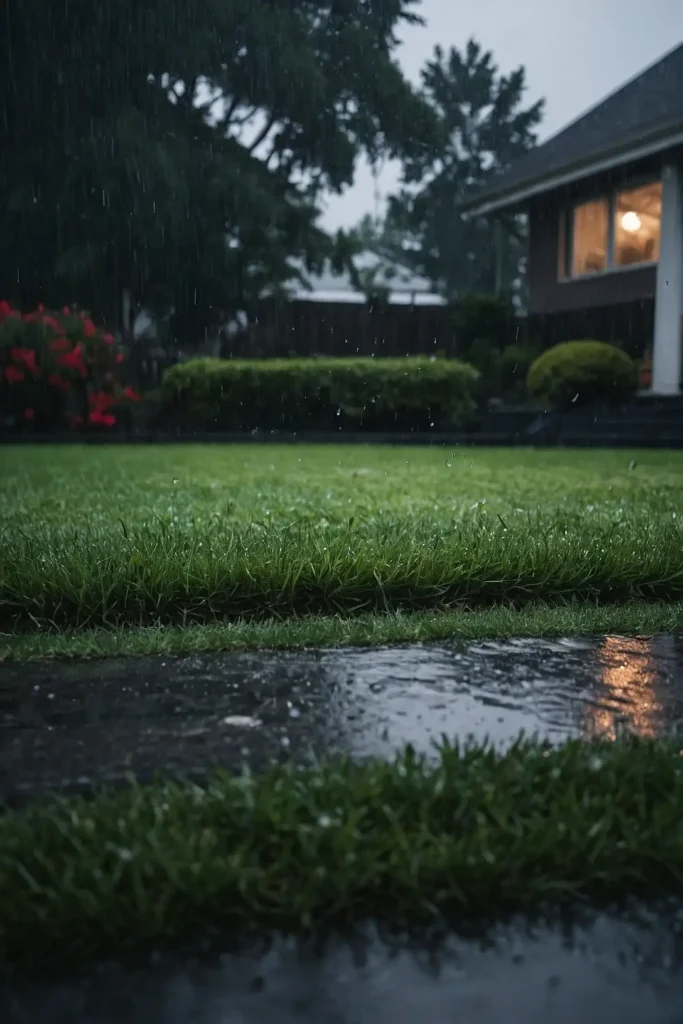
Watch for yellow or brown patches that spread fast after heavy rain. These spots are often an early sign of root rot or disease.
If your lawn feels spongy underfoot, the ground is probably holding too much water. Pools of water that stick around for more than a day signal poor drainage.
Grass that lifts easily from the soil or smells sour probably has rotting roots. Mushrooms and mold popping up in new places also mean your lawn needs help.
Look for these warning signs after strong storms:
- Puddles lasting 24+ hours
- Foul, musty odors
- Sudden increase in weeds or lawn pests
Essential Lawn Protection Strategies
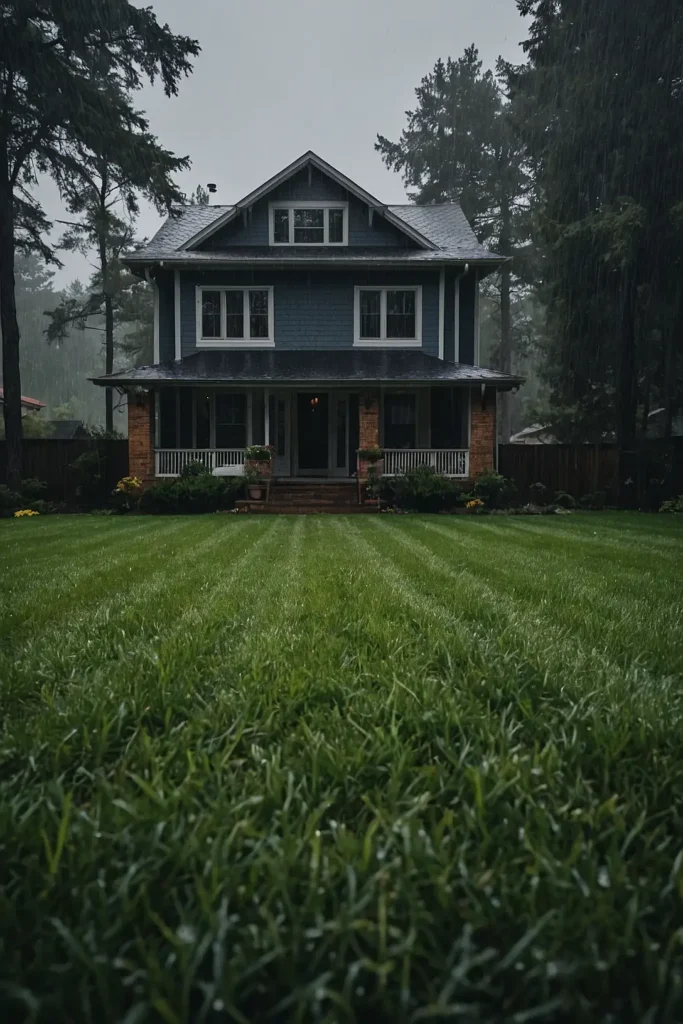
Protecting your lawn from heavy summer rain means focusing on drainage, choosing strong types of grass, keeping soil loose, and managing overall lawn health. Each step helps your yard stand up to storms and bounce back faster after wet weather.
Improving Lawn Drainage
Good drainage keeps water from pooling and reduces the risk of root rot or erosion. If your yard has standing water after rain, look at how water flows across the area. Sometimes, just adjusting the slope or adding soil to low spots helps a lot.
Aerate your lawn once a year to boost drainage. This means poking small holes in the soil so water can move down and reach roots. For spots that flood often, install French drains or use gravel channels.
Keep gutters and downspouts clear and aimed away from your lawn. This stops extra water from pouring onto your grass. In really heavy rains, adding a rain garden or using raised beds in problem spots can help.
Selecting Resilient Grass Types
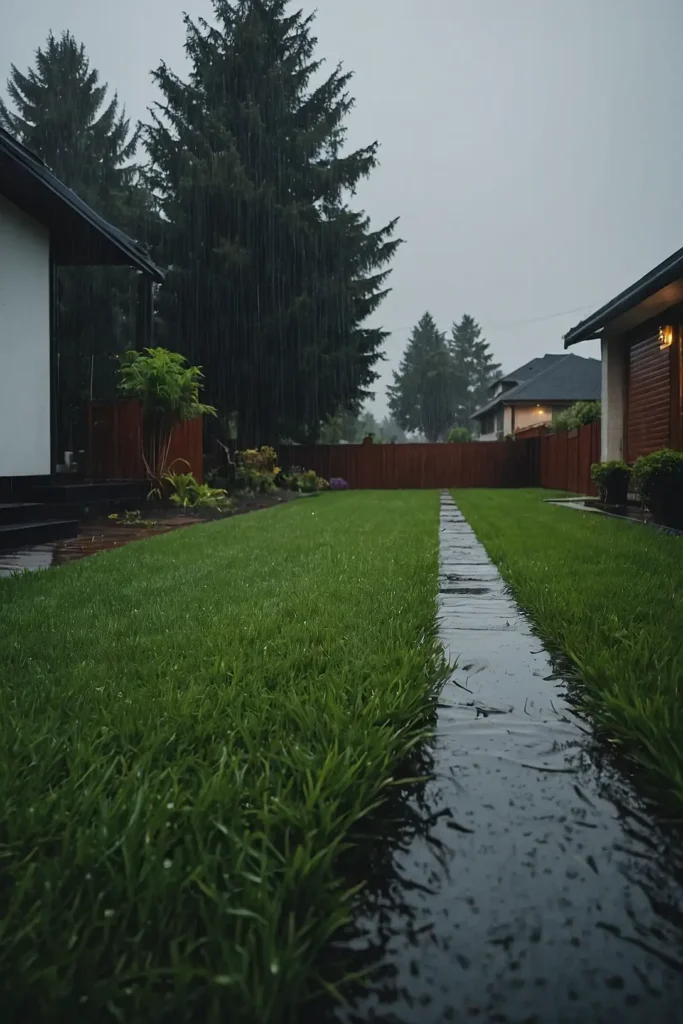
Some grass types handle heavy rain and soggy soils better than others. Warm-season grasses like Bermuda and Zoysia work well for areas with summer storms because their deep roots recover quickly from wet soil.
For cooler climates, tall fescue tolerates both wet and dry weather. Choose seed blends labeled “drought and flood-tolerant” or look for disease-resistant varieties. These are less likely to die off or turn yellow after a storm.
If you have shady, damp spots, some fine fescues or ryegrass might do better. Ask local lawn experts or garden centers for advice—they usually know what survives your region’s summer weather.
Managing Soil Compaction
Rain makes soil heavy and packed, which keeps air and water from reaching roots. To fix this, aerate your lawn—especially after a wet season or if you notice lots of puddles. Rent an aerator, or use a spike tool for small areas.
Try not to walk on wet lawns, as this packs the soil even tighter. Move heavy equipment or play areas away from soaked spots after rain. Adding organic compost once or twice a year also helps loosen compacted soil and makes it healthier.
If you have clay soil, mix in sand or compost to improve texture and drainage. Check the soil every few seasons to spot problems early.
Maintaining Proper Lawn Health
Keeping your grass healthy helps it stand up to heavy rain. Mow at the right height for your grass type, leaving blades a little taller during summer for better moisture control. Avoid cutting more than one-third of the blade at once.
Fertilize in late spring or early summer with a slow-release formula. Don’t over-fertilize, especially before a big storm, since extra nutrients can wash away and pollute local water.
Water deeply but less often, using the “tuna can test” to make sure you soak the ground without causing runoff. Remove leaves, debris, or thatch buildup so water can flow through the lawn. Regular maintenance cuts disease risk and helps your grass recover faster after rain.
Proactive Steps for Preventing Lawn Damage
Keeping your lawn safe during heavy summer rain means taking steps before, during, and after storms. Addressing soil health, drainage, and surface protection limits damage from water and foot traffic.
Routine Lawn Aeration
Aeration cuts soil compaction, which happens from foot traffic, yard equipment, and rain. When soil gets compacted, water can’t reach the grass roots, leading to pooling and weak plants. Aerating lets more air, water, and nutrients get deeper into the soil.
The best time to aerate is late spring or early summer, before the big storms start. Use a core aerator to pull out plugs of soil from your lawn. Aim to aerate once a year for most lawns, and twice a year if you’ve got heavy use or clay soil.
If your lawn gets a lot of foot traffic—kids playing, outdoor parties, the usual—then aeration’s even more important. This practice helps roots grow deeper and makes grass stronger against heavy rain and dry spells.
Aeration tips:
- Water your lawn lightly a day before aerating.
- Mark sprinkler heads to avoid damage.
- Leave soil plugs on the lawn to break down naturally.
Smart Water Management During Rainy Weather
Proper drainage keeps your lawn from turning into a soggy mess. Heavy rain can cause puddles, erosion, and even foundation problems if water has nowhere to go.
Check your yard for areas where water collects. Use gutters, downspouts, and drain pipes to move rainwater away from your lawn and house. Make sure these are clear and pointed toward a safe area like a rain garden or storm drain.
If you notice standing water after storms, consider grading the lawn so water moves away. You can also install French drains or dry wells for serious drainage issues.
Mow your grass a little higher during rainy times. Taller grass helps slow water run-off and keeps soil from washing away.
Water management checklist:
- Check downspouts after heavy rain.
- Fill in low spots where water pools.
- Clear drains of debris.
Using Mulch and Ground Covers
Mulch and ground covers shield soil from direct rain. That helps prevent erosion and stops runoff from washing away nutrients and grass seed.
Spread about 2-3 inches of mulch under trees, shrubs, and around garden beds. Organic mulches, like shredded bark or pine needles, keep moisture in but still let water drain away.
Don’t pile mulch against tree trunks—give them some space so they stay healthy.
For open spots, try ground covers like clover, creeping thyme, or low-growing perennials. These plants protect soil between grass patches and cut down on mud when it rains.

